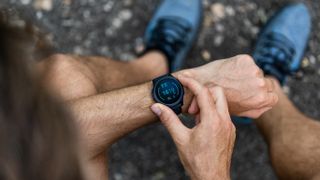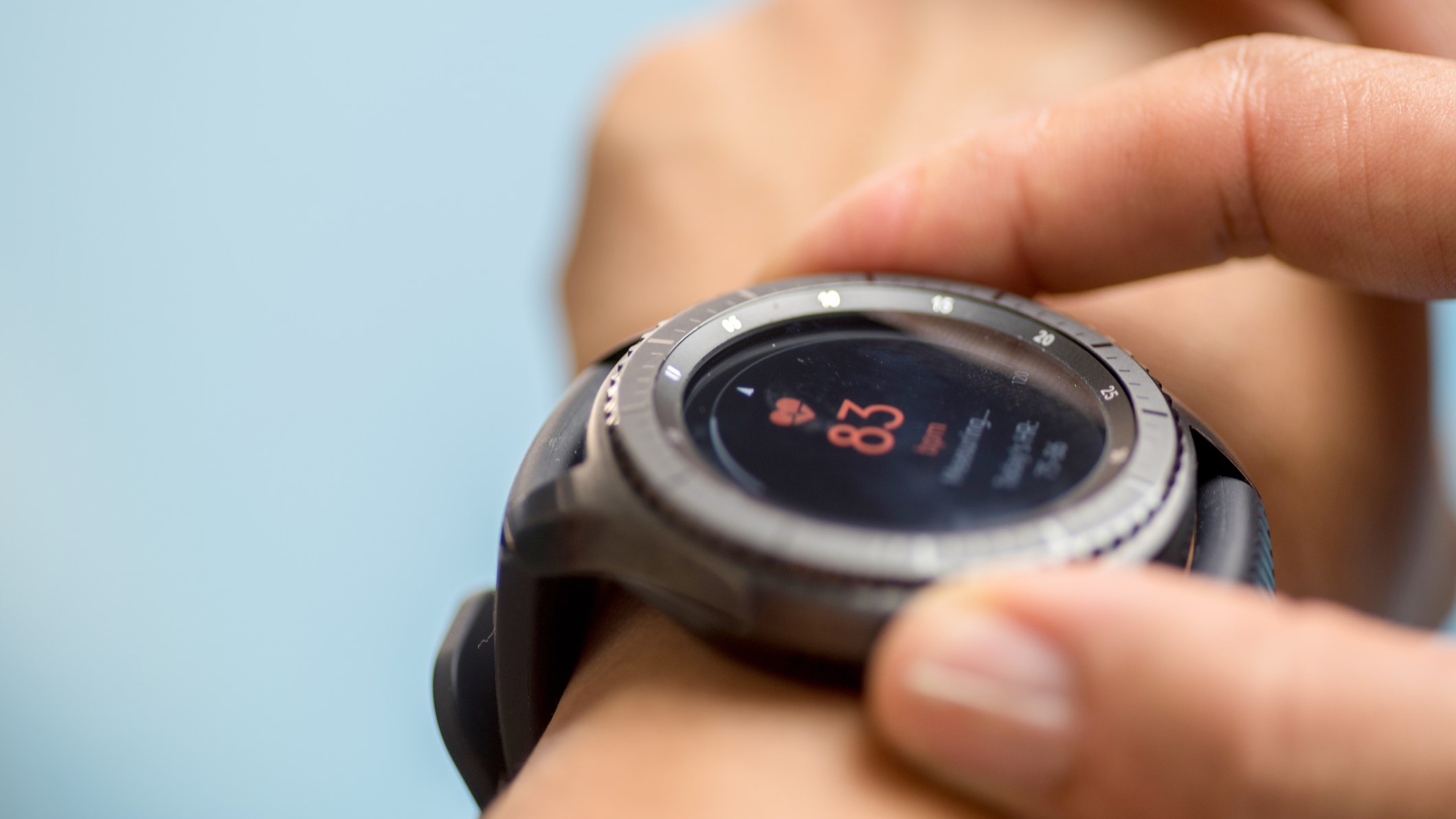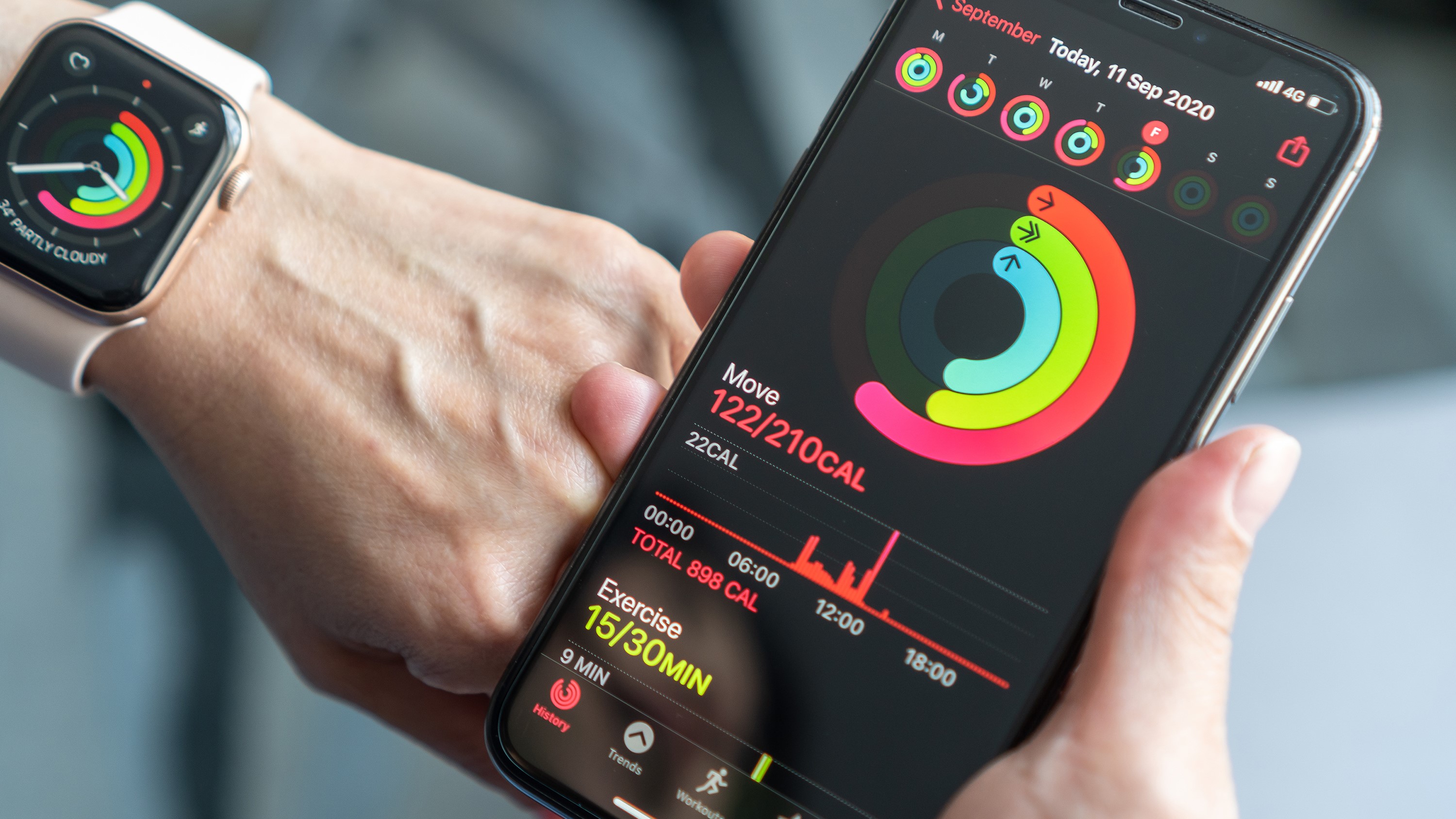Have a running watch? Here's the 5 metrics you should care about
Have a running watch? Here's the 5 metrics you should care nigh

Every bit a runner, it'due south taken me near 10 years, and 4 marathons, to prepare up my scout correctly and acquire what I really need to come across on the run. Allow me requite you an example. I'm xx miles into my 2d marathon, training has gone well and up until now, I've been running potent. For some reason (probably the crowds, or the skyscrapers) the GPS on my scout tells me my electric current step is a minute slower than my actual pace.
Mentally, I give upwardly. I showtime walking. I have a cry. I call my dad, and I cross the cease line 10 minutes later than I'd hoped. A lot of things went wrong, but ultimately, in that second, if I'd looked at my average footstep, not my current one, the race might have gone differently.
Before y'all send that new running watch back, please also know that this corking little gadget yous only unboxed likewise has the power to revolutionize your training. Yous'll be able to track your runs meliorate, on certain watches you'll be able to download training plans or set up more technical workouts, and it might fifty-fifty permit you to leave your phone at habitation on your adjacent run. A good running sentry can also help you better understand your wellness as a whole, through slumber tracking and recovery data.
But if the data on your wrist is overwhelming you lot, or you're not sure what exactly y'all should be looking at on the run, hither's a quick guide. Information technology can also help you decide which metrics you have on the screen as you run. (What's more than, if y'all're reading this before upgrading, take a look at the all-time running watches to buy right now).
5 metrics runners should care virtually on their running watch:
Average stride
Your boilerplate step gives y'all your average mile fourth dimension for the entirety of your run, whereas your current footstep gives you lot your pace for the mile you are in. While both are extremely useful, I'd say that if yous're trying to get out of obsessively checking your watch, average pace is the more of import metric to check when you're on the run. Recall that your running sentinel'south GPS tin can be affected by skyscrapers, tunnels, or just a bad signal, so your current pace might fluctuate pretty drastically.
On my watch, I opt to see average pace on the principal screen, simply besides have a split screen that shows current pace and average pace for speed sessions.
Altitude
An obvious one, but it's probably a metric y'all're going to want to run into when you glance down at your wrist. You'll also probably want to see your time, too, particularly if you're grooming to time rather than distance.

Heart charge per unit
Nigh running watches that have the ability to runway middle rate will brandish 'centre charge per unit zones' during a run. When you first ready your scout, most will utilise default settings to decide your heart charge per unit zones, which might change slightly equally you get fitter. On some Garmin running watches, yous tin set different heart rate zones for different sports profiles, you can also adapt your heart rate zones manually.
Your heart rate zones are usually calculated from your max heart rate (MHR), which is the maximum amount of times your centre will crush in a infinitesimal. Your max middle charge per unit is unique to you and normally determined by your age and genetics, not how fit you are. For example, your recovery heart rate zone will be around 50-lx% of your MHR, your calorie-free or endurance heart charge per unit zone volition be effectually 60-70% of your MHR, your aerobic zone will be lxx-80% of your MHR, your anaerobic zone will be fourscore-ninety% of your MHR and your threshold zone will be 90-100% of your MHR.
But why are these important? While every runner is different, heading out and running in your threshold zone every single run probably isn't a long-term training strategy you'll want to stick to. More advanced runners, for example, will aim to spend a large corporeality of their easy training miles in the light or endurance middle charge per unit zone, in society to fully recover and build aerobic fitness. On the other hand, if you're not pushing yourself difficult enough in your speed sessions, you lot're as well likely to plateau in your training. Learning more most your heart rate can aid y'all train smarter.
Cadence
In layman's terms, your cadence is the number of steps you have per minute. Information technology's not something yous'll need to see on your lookout while y'all're running, simply it'due south a useful training tool to look at once y'all've uploaded your run to your preferred app, equally information technology tells yous a lot about your running class.
For most runners, your cadence is probable to sit between 150 and 200 steps per minute, merely studies have found that running at a cadency of over 170 steps per infinitesimal is best for running efficiently.
That said, a lower cadence isn't a bad thing, it just isn't conducive to running faster, and then if that's your goal, information technology's time to piece of work on your footstep length, usually by incorporating speed work into your plan. Another like shooting fish in a barrel mode to piece of work on your cadency is to download a 170 BPM soundtrack from your favorite music streaming app and listen to that as you run — you should find it easier to autumn into footstep to the music.

VO2 Max
Some other one that sounds pretty scary, or like a flashback to your scientific discipline lessons at loftier school — your VO2 maximum is the book of oxygen in millimeters you can use per minute, per kilogram of body weight when preparation in your maximum threshold. Makes sense, right?
If you're fifty-fifty more than confused, only know that the number refers to how much oxygen your torso is able to have on when yous're running. Y'all ideally want that number to get higher every bit yous get fitter, as the higher your VO2 max is, the better your body is at getting oxygen to your muscles as you motion, helping you get faster, or further. It'due south as well an indicator of how efficiently you're running.
When yous set up your new running sentinel, it'll commonly ask yous to run for 10 minutes to determine your VO2 max, using your pace and centre charge per unit. The most accurate way to work out your VO2 max is to go to a lab, but that's probably a petty farthermost, and unless y'all're an athlete, your spotter should give you a good enough idea. Unlike your max middle charge per unit, this is something you can work on, and information technology should get college as you get fitter.
Recovery data
Another metric plant on almost running watches nowadays will be focused effectually recovery — on the Garmin Precursor series, this is referred to as 'Recovery Time', Polar running watches have 'Preparation Load'. After the holidays, or when we purchase a new gadget with a race in mind, it'southward all as well easy to increase our grooming by too much, too presently. This often results in injury, or time out, neither of which is something you're likely to want.
Running watches are smart recovery tools these days, and will often give y'all a suggested recovery time based on how hard you've worked in the session. This is often shortened if you become a good night's sleep, or reduce the load on your body over a few days.
Whatever running sentinel you've simply unboxed, learning more most the recovery tools available is a sure-fire way to await after your body and avoid overtraining injuries.

The things yous should forget about:
Calories burned
Unless you're concerned about your weight and are attempting to burn more calories than yous consume to shed some pounds, incessantly checking your calories burned throughout the twenty-four hours probably isn't good for y'all. As someone with a history of eating disorders, information technology's ever something I hide from the home screen of my running sentry, as I find that it encourages obsessive habits. There is also research that suggests that on some running watches, the predicted calories burned aren't all that accurate (after all, the number is engineered past an algorithm on a car, and humans aren't machines) so it's definitely not something to go too hung up about.
Steps taken
To be clear, I'1000 not slating anyone who does count their steps, as I know it can encourage people to become up and walk effectually the role between meetings, or have the stairs not the lift, and that's peachy. That said, it'south not a metric I'd worry about also much, every bit recent enquiry has found little scientific prove backside the reasoning that, for instance, 10,000 steps per 24-hour interval is a goal to shoot for.
It's also worth noting that your running watch is likely to measure steps taken by electromagnetic sensors that pick upwardly motion. The watch volition then use an algorithm to convert said motion into steps. The algorithm used will often only discover steps if they are considered to exist a 'normal' pace, or a 'normal' cadence, which ways your watch ofttimes won't pick upward steps if y'all are, for example, pushing a stroller. Again, it's non worth completely disregarding, simply it'southward probably not a metric worth getting too hung up over.
Looking to get fitter? We've paw-picked some of the best gear on the marketplace, including the best running shoes, the best trail running shoes, and the all-time carbon fiber running shoes to wear on race day.
If you lot're not a runner, we've likewise paw-picked the best adaptable dumbbells and the best practice bikes for working out at home.
Source: https://www.tomsguide.com/news/metrics-runners-running-watch
Posted by: webbsliquichater.blogspot.com


0 Response to "Have a running watch? Here's the 5 metrics you should care about"
Post a Comment